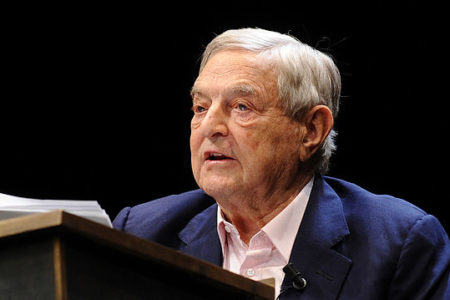
The relationship between ends and means has long been debated. For instance, the legacy of “the end justifies the means” traces back to Sophocles’s Electra four centuries before Christ, Ovid’s Heroides, and Machiavelli’s The Prince. And more recently, Leonard Read pointed out that if the ends are just hopes that will not, in fact, be achieved, they cannot justify means that infringe on others’ rights.
Currently, the draconian and often arbitrary policies that have been imposed in response to COVID-19, combined with a result far less deadly than was originally forecast, have raised a different issue about ends and means.
More and more people have begun protesting that the policies are too costly, perhaps most commonly expressed as “the cure can’t be worse than the disease.” That, in turn, has led to current policy defenders’ condemnations, such as New York governor Andrew Cuomo’s assertion that “we’re not going to put a dollar figure on human life,” the New York Times’s characterization of the issue as “a moral trade-off between saving lives and sustaining economic livability,” or even Martin Gak’s more extreme characterization that objectors believe “a few should die so the many can live.” I even heard a sermon arguing that even one COVID-19 death justifies the continued government shutdown of the economy.
Unfortunately, such lives versus money (or the economy) comparisons make the mistake of comparing a particular end (reducing COVID-19 deaths) not to another end, but to a means (additional resources) that can achieve many alternative ends. And those alternatives include saving other lives.
Since the means (money or produced resources) are not anyone’s ultimate end, framing the issue as lives versus money makes it appear that we should stop at nothing to save a COVID-19 life, because that end is more valuable than something that is a “mere means.” And not far behind is the implication that those on the “other side” are just mean-spirited and selfish. But those are mischaracterizations.
The most recent edition of James Gwartney’s economics text addresses this issue well in its very first chapter, devoted to essential principles. “Using resources to do one thing leaves fewer resources to do another.” Using the example of mandatory airbags assumed to save four hundred lives annually a year at a cost of $50 billion dollars, Gwartney points out that “Economic thinking, however, forces us to ask ourselves if the $50 billion spent on air bags could have been used in a better way—perhaps, say, for cancer research that could have saved more than 400 lives per year….In this case, the appropriate analysis is not simply the lives saved with air bags versus dollars spent on them, but also the number of lives that could have been saved (or other things that could have been accomplished) if the $50 billion had been used differently.”
Translated to the COVID crisis, the relevant tradeoff is not lives lost versus less money (more accurately, resources) produced, as it is often portrayed. It is also a tradeoff between lives lost due to COVID and lives that will be lost from the policies adopted to reduce COVID deaths. The only real difference from the airbag example is that the COVID deaths come now, to specific people, making them more easily recognized, while the lives lost due to the costs of the policies adopted will come later, to unknown “statistical” people, and current policymakers are unlikely to be blamed.
Consequently, saving additional COVID victims today with a particular policy may result in even more avoidable deaths in the future. If that is the case, such a policy will result in more people dying, and “we’re not going to put a dollar figure on human life” has nothing to do with it.
Is such a consequence actually conceivable? Yes. For just one illustration, a 2016 analysis of the 2008 economic meltdown in The Lancet estimated that it “was associated with over 260,000 excess cancer deaths in the OECD alone, between 2008–2010.” Given the magnitude of the likely COVID death toll, that alone could mean that shutting down the economy kills more people than it saves. And added cancer deaths are not the only adverse effect of the economic shutdown and other COVID policies (as with delayed diagnoses of other diseases and surgeries not done because such cases have been crowded out of hospitals).
Further, a United Nations report this month summarized the potential effects of COVID policies on children: “Children are not the face of this pandemic. But they risk being among its biggest victims….the crisis is having a profound effect on their wellbeing. All children, of all ages, and in all countries, are being affected, in particular by the socio-economic impacts and, in some cases, by mitigation measures that may inadvertently do more harm than good. This is a universal crisis and, for some children, the impact will be lifelong.”
The Issues and Insights editorial board goes even further. They not only cite the UN study, in which “Hundreds of thousands of additional child deaths could occur in 2020,” but they remind us that “this is likely a low-ball estimate because it counts only the direct impact of a worldwide recession, not the impact shutdowns are having on access to health care, vaccines, prenatal care, food and nutrition, or mental health care.”
One of the most basic of economic principles is that of opportunity costs. Every time resources are directed to one purpose, those resources are no longer available for other purposes, which might well be more valuable. That means we must always weigh the value of the ends accomplished by a policy against alternative ends that the resources involved could have accomplished. But when life-saving efforts are portrayed as lives versus money or production, as with current COVID policies, they are not proof that current policy choices are justified, but a rhetorical cheat that proves that questions which are essential to good policy formation are not being considered.
via Mises Institute






Recent Comments